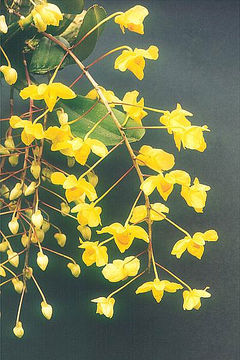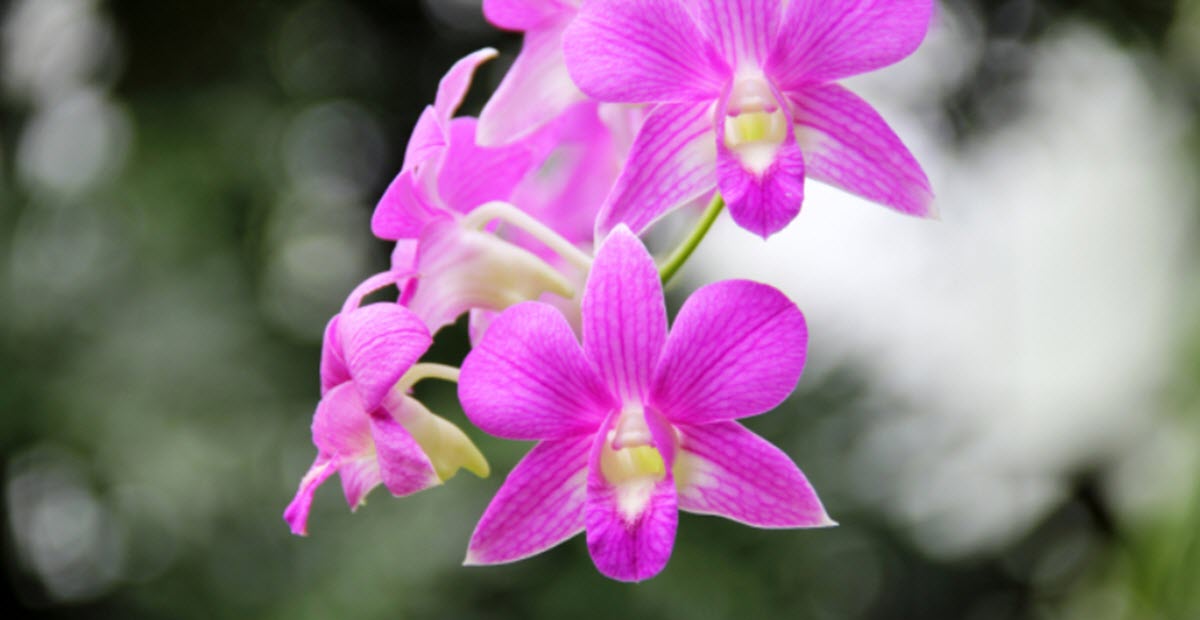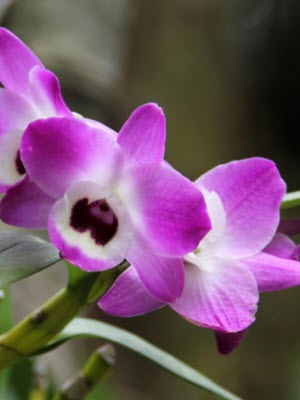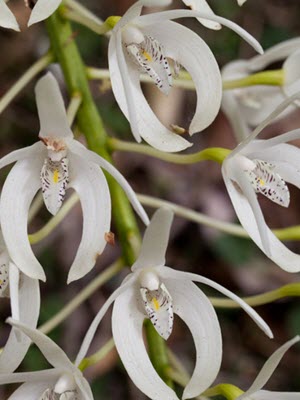Dendrobium Orchid Care
Contents
There are over 1200 described species in the genus Dendrobium and they are found in a wide range of different habitats. Some grow on trees while others grow over rocks, and it is hard to give any general guidelines that fit all the different Dendrobium species and hybrids. It is therefore always a good idea to obtain more detailed information about your specific species, hybrids or group of Dendrobium orchids in addition to the general information provided here. Dendrobium orchids growing in the Australian desert does not automatically have the exact same requirements as Dendrobium orchids from the tropical forests of Asia or Dendrobium hybrids produced for the floral trade.

Dendrobium lindleyi – orchid
Due to the look of their flowers, Dendrobium orchids are sometimes called “Phalaenopsis type orchids”. This does not mean that Dendrobium and Phalaenopsis are close relatives or have the same characteristics. One of the more notable differences is for instance that Phalaenopsis orchids are evergreen while Dendrobium orchids shed their foliage each fall.
Light
The recommended Dendrobium care in this regard is to place the orchid in a spot where it will receive a lot of morning and afternoon sun, while being shaded from the strong mid-day rays. Do not expose your Dendrobium orchid to direct sunlight between 11 am and 3 pm. Too intense light can make the leaves yellow. If the leaves instead develop an unusually dark shade of green, it is a sign that tells you that your orchid is not getting sufficient amounts of light.
Temperature
Generally speaking, Dendrobium orchids thrive in environments where the night temperature is considerably lower than the day temperature. If the day temperature is 75 – 85˚ F (24 – 29˚ C) the night temperature should ideally be decreased down to 60 – 65 °F (15.5 – 18˚ C).
Another essential part of good Dendrobium orchid care is to protect your plants from extreme temperatures, e.g. by avoiding opening up windows when it’s freezing outside. A well established Dendrobium will normally survive occasional accidents, but it is not healthy for it.
Watering
Dendrobium orchids do not grow with their roots buried in deep, soggy soil and they are therefore not adapted to a life where they have to stand in water or very moist potting material. The best advice is therefore to make sure that the potting medium is completely dry before you give your Dendrobiums any more water.

Dendrobium hybrid. By Fan Wen
Nutrients
Giving your plants sufficient amounts of nutrients is an important aspect of proper Dendrobium orchid care and you should definitely bring home a high nitrogen fertilizer (25-9-9) if you keep Dendrobium orchids. Dendrobium orchids will appreciate high nitrogen fertilizer 12 months a year. One teaspoon of fertilizer divided into many small servings is ideal. Giving your Dendrobium orchid a teaspoon of fertilizer once a month is not a good idea since this is a very unnatural way of receiving nutrients.
Orchid medium
Dendrobium orchids live on trees or rocks in the wild and are therefore not adapted to having their roots buried in soil. A well draining potting medium is a must for these orchids otherwise their roots can rot away. When it comes to potting medium, the ideal Dendrobium orchid care depends on the size of the pot. Dendrobium orchids kept in pots bigger than 6 inches across will do fine with medium grade fir bark. If the pot is smaller than this, mixing 10 parts find grade fir bark with 1 part orchid mix is better.
Repotting Dendrobium orchids
Dendrobium orchids normally need to be repotted every second year. If the potting medium starts to smell bad, stops draining well, or gets infested by mould, you need to repot immediately. The best part of the year to repot a Dendrobium orchid is spring, ideally right after the blooming.
Dendrobium species
.
Dendrobium orchid trivia!
One of the two national flowers of North Korea is a Dendrobium orchid cultivar. The name of this orchid is Dendrobium ‘Kim il Sung’ and it is commonly known as Kimilsungia. Kim Il Sung was the North Korean Communist leader from 1948 to 1994.

